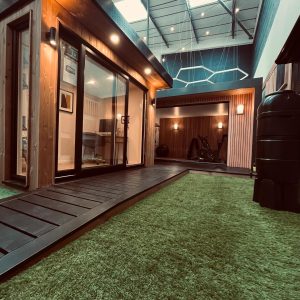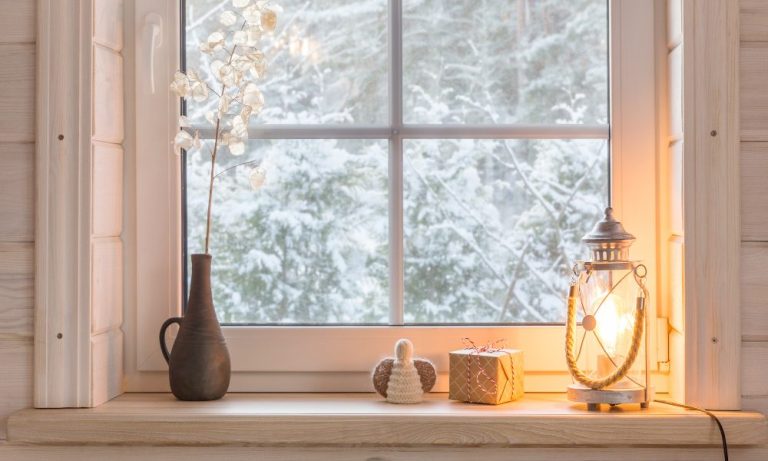Benefits of Adding a Toilet to Your Garden Room
Including a toilet in your garden room can significantly enhance its functionality and convenience. Here are some key benefits:
1. Enhanced Usability
A garden room equipped with a toilet can be used for longer periods without the need to return to the main house. This is particularly advantageous if the garden room serves as an office, studio, or guest room, as it provides added convenience and autonomy.
2. Increased Property Value
Installing a garden room with a toilet can potentially increase the value of your property. It makes the space more versatile and appealing to potential buyers who may appreciate the added functionality.
3. Improved Comfort
Having a toilet in your garden room enhances the comfort for users, especially if the room is located at a significant distance from the main house. It’s a practical addition that can make the garden room feel more like a self-contained unit.
4. Versatility in Use
A garden room with a toilet opens up a wider range of uses. It can function as a guest suite, a home office, or even a small studio apartment, offering more flexibility in how the space is utilised.
Features of Garden Rooms with Toilets
When planning to include a toilet in your garden room, certain features and design elements need to be considered to ensure functionality and compliance with regulations.
1. Plumbing and Waste Management
A key feature of any garden room with a toilet is a reliable plumbing system. This includes water supply, drainage, and waste management. Depending on the location and setup of your garden room, you may need to connect to the main sewage system or consider alternative waste management solutions such as a septic tank or composting toilet.
2. Insulation and Heating
Proper insulation and heating are crucial to maintain a comfortable environment in your garden room, especially if it includes a toilet. Adequate insulation helps to prevent pipes from freezing during winter and ensures the space remains usable year-round.
3. Ventilation
Good ventilation is essential to prevent moisture build-up and odours. Installing an extractor fan or ensuring the room has windows that can open will help maintain a fresh and hygienic environment.
4. Space Utilisation
Efficient use of space is vital when incorporating a toilet in a garden room. Consider the layout carefully to ensure the toilet area is discreet yet easily accessible. Using compact fixtures and fittings can help maximise the available space.
Planning Permission and Building Regulations
Before installing a toilet in your garden room, it’s essential to understand the planning permission requirements and building regulations that apply.
1. Planning Permission
In the UK, garden rooms are often considered permitted development and do not require planning permission if they meet certain criteria, such as size and height restrictions. However, adding a toilet involves additional considerations such as plumbing and waste management, which may require planning permission. It’s advisable to check with your local planning authority to confirm whether permission is needed.
2. Building Regulations
Installing a toilet in a garden room will generally require compliance with building regulations. These regulations ensure that the construction is safe, energy-efficient, and accessible. Key areas covered by building regulations include:
- Structural Integrity: Ensuring the garden room is built to a safe and robust standard.
- Drainage and Waste: Proper installation of drainage systems to handle waste.
- Ventilation: Adequate ventilation to prevent moisture and odours.
- Insulation: Sufficient insulation to maintain a comfortable environment and prevent pipe freezing.
Types of Toilets for Garden Rooms
There are several types of toilets suitable for garden rooms, each with its own set of benefits and installation requirements.
1. Mains-Connected Toilets
A mains-connected toilet is similar to the toilets found in a standard home, requiring a connection to the main water supply and sewage system. This option is ideal if your garden room is close to your main house and connecting to the existing plumbing infrastructure is feasible.
2. Composting Toilets
Composting toilets are an eco-friendly alternative that doesn’t require connection to the main sewage system. These toilets use natural processes to break down waste into compost, which can be safely used in gardens. Composting toilets are a good option for remote garden rooms or those where connecting to the mains is impractical.
3. Chemical Toilets
Chemical toilets use chemicals to treat and neutralise waste. They are typically used in caravans and portable setups. While they are convenient and do not require a permanent water supply or drainage, they do need regular emptying and maintenance.
4. Macerating Toilets
Macerating toilets, also known as upflush toilets, grind waste into a slurry that can be pumped through small-diameter pipes to the main sewage system. This type of toilet is useful in situations where a standard gravity-fed waste pipe installation is not possible.

Customising Your Garden Room with a Toilet
Customising your garden room to include a toilet involves careful planning and consideration of various factors to ensure the end result meets your needs and preferences.
1. Design and Layout
The design and layout of your garden room should incorporate the toilet in a way that optimises space and maintains a comfortable and functional environment. Consider using partition walls or enclosures to create a private bathroom area within the garden room.
2. Fixtures and Fittings
Choosing the right fixtures and fittings is crucial for creating a practical and aesthetically pleasing bathroom area. Opt for compact and space-saving options, such as wall-mounted sinks and toilets, to maximise the available space.
3. Lighting and Ventilation
Proper lighting and ventilation are essential for a comfortable bathroom area. Install adequate lighting fixtures to ensure good visibility, and incorporate ventilation solutions such as extractor fans or windows to maintain air quality and prevent dampness.
4. Accessibility
Ensure that the toilet area is easily accessible and complies with any necessary accessibility standards. This is particularly important if the garden room will be used by individuals with mobility issues.
Popular Uses for Garden Rooms with Toilets
Garden rooms with toilets offer a versatile space that can be adapted for various uses, making them a valuable addition to any property.
1. Home Office
A garden room with a toilet makes an ideal home office, providing a dedicated workspace that is separate from the main house. The added convenience of a toilet ensures that you can work uninterrupted and maintain productivity throughout the day.
2. Guest Accommodation
Transforming your garden room into a guest suite with a toilet is a great way to provide comfortable and private accommodation for visitors. It offers guests their own space, complete with essential facilities, enhancing their stay.
3. Art Studio
For artists and creatives, a garden room with a toilet can serve as a perfect studio space. The convenience of having a toilet nearby means you can focus on your work without frequent interruptions.
4. Home Gym
A garden room equipped with a toilet can be an excellent home gym, allowing you to exercise comfortably and conveniently. The presence of a toilet adds to the practicality, especially during longer workout sessions.
5. Hobby Room
Whether it’s a sewing room, a woodworking shop, or a gaming space, a garden room with a toilet provides a dedicated area for pursuing your hobbies. The added facility ensures you can spend extended periods in your hobby room without needing to return to the main house.
Cost Considerations for Building a Garden Room with a Toilet
Building a garden room with a toilet involves several cost considerations, from initial construction to ongoing maintenance.
1. Initial Construction Costs
The initial construction costs of a garden room with a toilet will depend on factors such as size, materials, and complexity of the plumbing and waste management systems. On average, you can expect to pay more for a garden room with a toilet compared to a standard garden room due to the additional plumbing and installation work required.
2. Plumbing and Installation Costs
Connecting the garden room to the main water supply and sewage system can be costly, especially if the garden room is located far from the main house. You may need to hire professional plumbers and contractors to ensure the installation meets building regulations and is done correctly.
3. Fixtures and Fittings
The cost of fixtures and fittings for the toilet area, such as the toilet itself, sink, taps, and ventilation systems, should also be factored into the overall budget. Opting for high-quality, durable fixtures can result in higher initial costs but may save money in the long run due to reduced maintenance needs.
4. Maintenance Costs
Regular maintenance is essential to keep the toilet and plumbing systems in good working order. This includes routine checks for leaks, blockages, and ensuring the ventilation system is functioning correctly. Composting and chemical toilets may require more frequent maintenance compared to mains-connected toilets.

Tips for Choosing the Right Garden Room Builder
Selecting the right builder for your garden room project is crucial to ensure a high-quality and hassle-free installation.
1. Research and Recommendations
Start by researching local builders who specialise in garden rooms. Look for reviews and testimonials from previous clients to gauge the quality of their work. Personal recommendations from friends or family can also be valuable in finding a reliable builder.
2. Experience and Expertise
Choose a builder with extensive experience and expertise in constructing garden rooms, particularly those that include plumbing and toilet installations. An experienced builder will be familiar with the necessary regulations and best practices, ensuring a smooth construction process.
3. Portfolio of Previous Work
Review the builder’s portfolio to see examples of their previous projects. This will give you an idea of their style, quality of work, and attention to detail. Pay particular attention to any garden rooms they have constructed with toilets, as this will be directly relevant to your project.
4. Transparent Pricing
Ensure that the builder provides a detailed and transparent quote for the project, including all costs associated with plumbing, fixtures, fittings, and any necessary permits. This will help you avoid any unexpected expenses and allow you to budget effectively.
5. Communication and Professionalism
Good communication is essential for a successful building project. Choose a builder who is responsive, professional, and willing to discuss your needs and preferences in detail. A builder who listens to your requirements and provides clear explanations will help ensure the final result meets your expectations.
Installing a toilet in a garden room can greatly enhance its functionality, comfort, and versatility. Whether you plan to use the space as a home office, guest accommodation, or hobby room, the added convenience of a toilet can make a significant difference. However, it’s important to carefully consider the planning permission requirements, building regulations, and cost implications before embarking on the project.
By choosing the right type of toilet, customising the design to suit your needs, and selecting a reputable builder, you can create a garden room that offers all the benefits of a self-contained unit. With proper planning and execution, your garden room with a toilet can become a valuable and enjoyable addition to your home, providing a practical and comfortable space for a variety of uses








